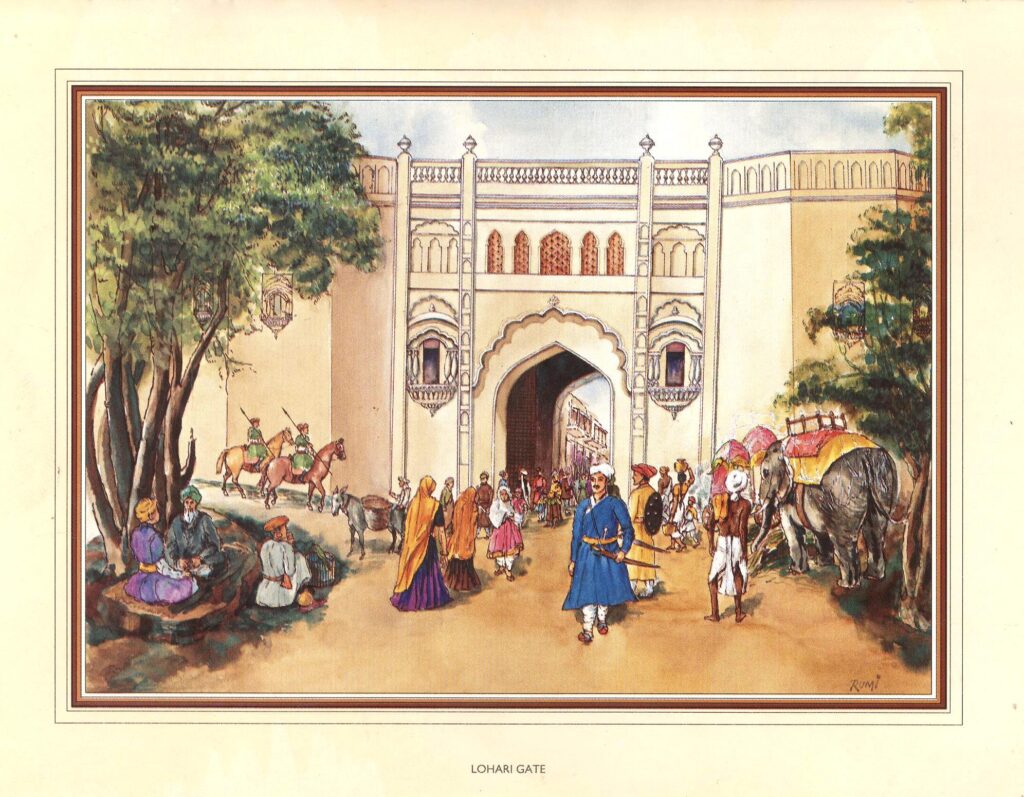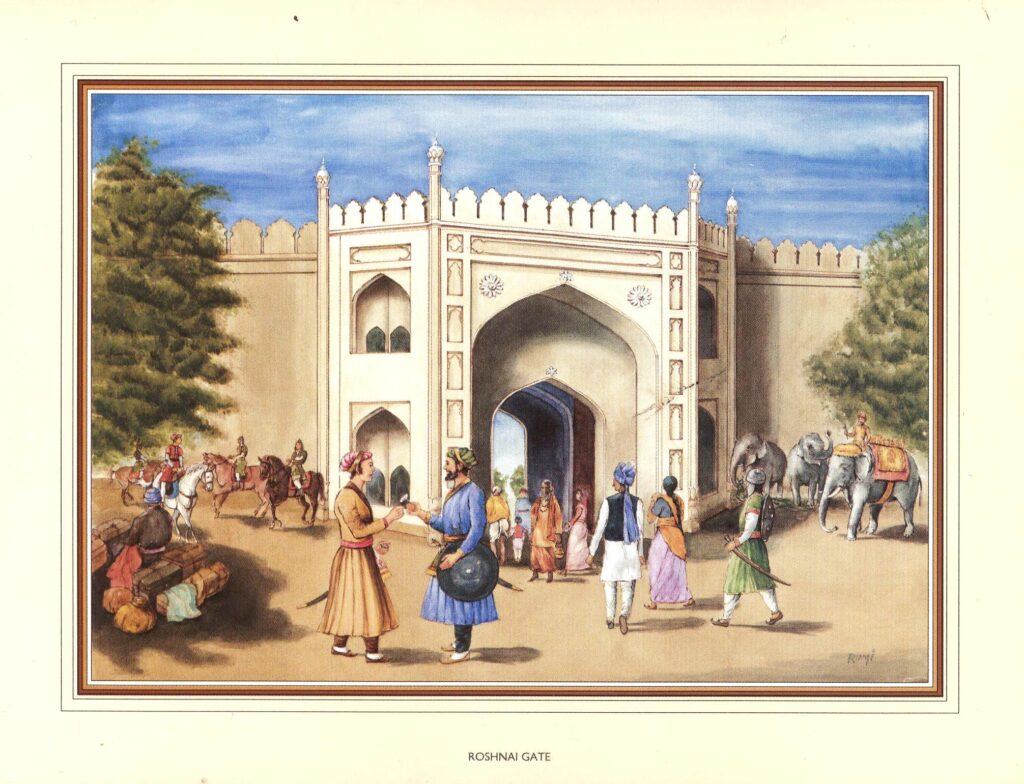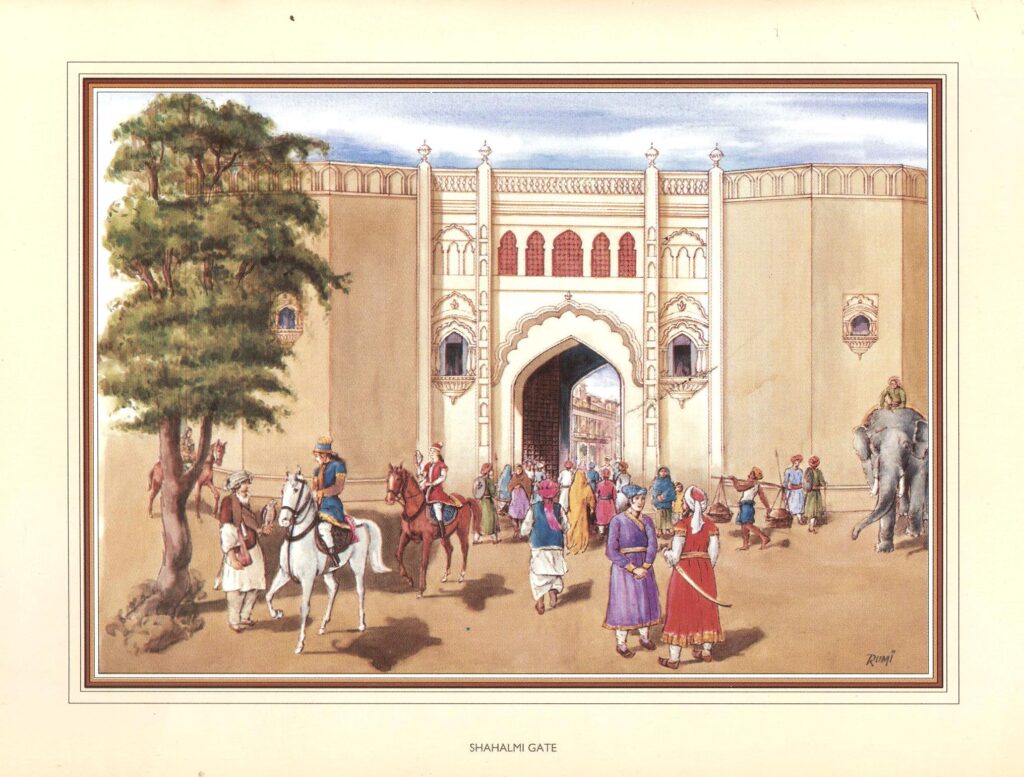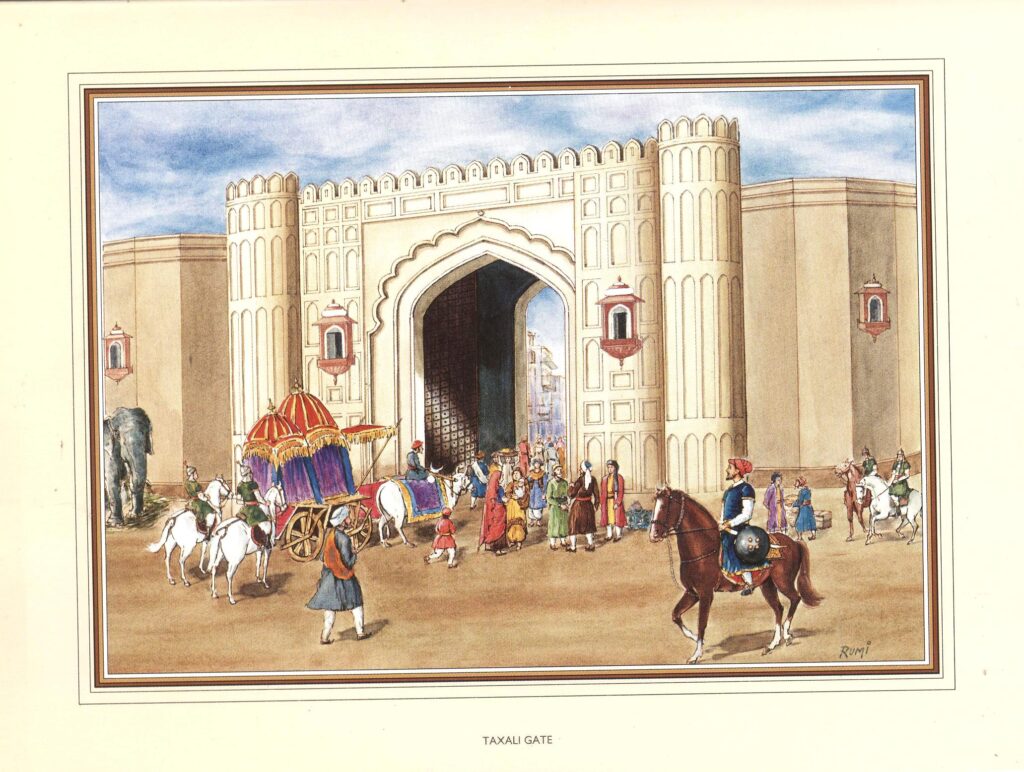Have you seen the city of 13 gates?
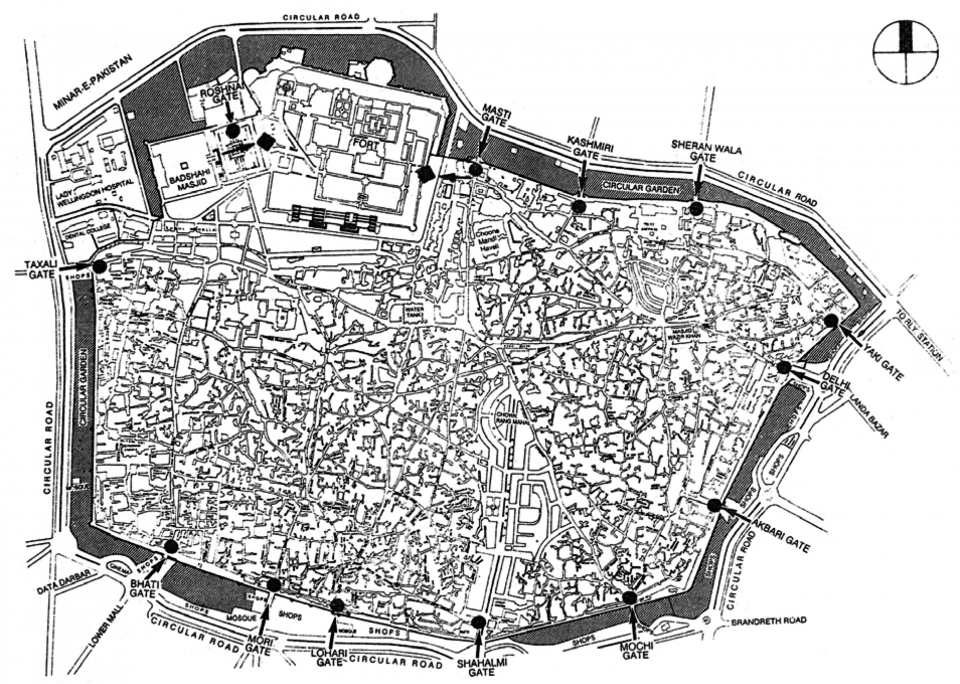
Lahore is a city that mystifies you in many ways. Probably this is a one unique city with thirteen entrances to it and each entrance having its own origin and story. You travel through the scuffing streets looking at the corroding balconies and burnt brick structures; you will come across a new story of old times and a tale of the golden ages. Well, in the Mughal days, the Old City was surrounded by nine meter high brick wall and had a rampart running around it which served as a protection for the city. A circular road around the rampart gave access to the city through thirteen gates. This was the era of the third Mughal emperor Akbar the Great. The gates were opened at the sunrise and closed with the sunset every day. Imagine the grandeur and glory of these gates at that time. The Mughal soldiers or the Chobdaar standing with the guard elephants outside these gates, the princesses and princes, the kings and queens passing through these gigantic structures in their shiny flowing silk gowns, precious crowns and waving the public with zeal and love. Where hundreds of people would have been waiting to see the Mughal entourage! Some of the imposing structures of these gates still exist but the life has changed within them.
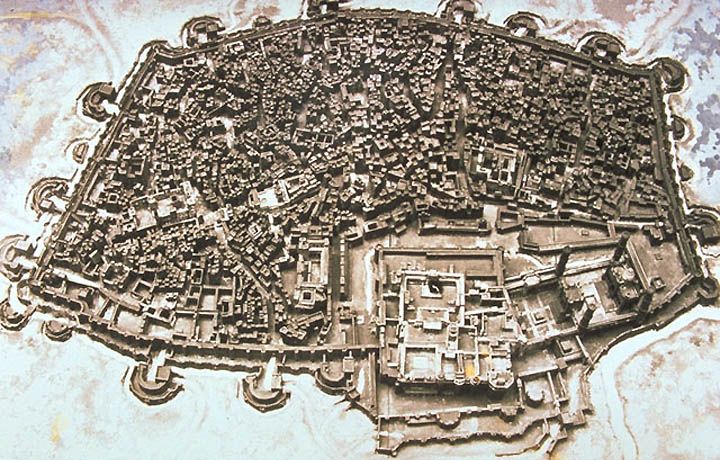
The glorified era has ended and now the gates are just a mark of the past with no importance given to them and I feel their cries over the mistreatment they have been through since ages.
The Thirteen gates of Lahore are Delhi Gate, Roshnai Gate, Akbari Gate, Yakki Gate, Bhati Gate, Sheranwala Gate, Lohari Gate, Kashmiri Gate, Mori Gate, Masti Gate, Shah Alam Gate, Taxali Gate and Mochi Gate. Only six gates have survived till today which are Delhi Gate, Bhati Gate, Lohari Gate, Kashmiri Gate, Sheranwala and Roshnai Gate.
Delhi Gate
The only gate conserved so far is Delhi Gate which is also illuminated at night for the tourists. The cries of this gate were heard during the conservation of Royal Trail project, otherwise it would also have been among the dilapidated ones. Another wonder attached to this gate now is the UNESCO awarded Shahi Hammam which is on the left as you enter the gigantic arches of this gate. It is the gate situated on east of Walled City and opens towards Delhi City, which was the capital of Mughal dynasty. The UNESCO awarded street Gali Surjan Singh is also located inside this gate. this gate is now becoming a popular one among the tourists as there are guided tours provided by the Walled City Authority in the streets of this gate. Monuments like Wazir Khan Mosque, Dina Nath Well, Golden Mosque, Baoli Bagh, Mariam Zamani Mosque, Janam Asthan Guru Arjun Raam and even the Royal Fort come on a straight path as you start your journey from Delhi Gate, which is why it is call the Royal Trail.

Yakki Gate
Next is the Yakki gate whose structure does not exist now. The original name was “Zaki,” which was derived from the name of a martyr saint, who, according to tradition, fell fighting against the Mughal infidels from the north, while gallantly defending his city.

Sheranwala Gate
The river Ravi in former times flowed by the city walls, and the ferry was near the spot where a gate was built. The gate was, therefore, named Khizri, after the name of Khizr Ilyas, the patron saint, according to the Mohammaden belief, of running waters and streams, and the discoverer of the water of immortality. During the Ranjeet Singh’s rule, cages of two lions were put outside the gate owing to which the gate got familiarity with the name of Sheranwala gate. At present, this gate is passage to huge Pakistan Cloth Market. This gate needs restoration as it is in a dilapidated condition.
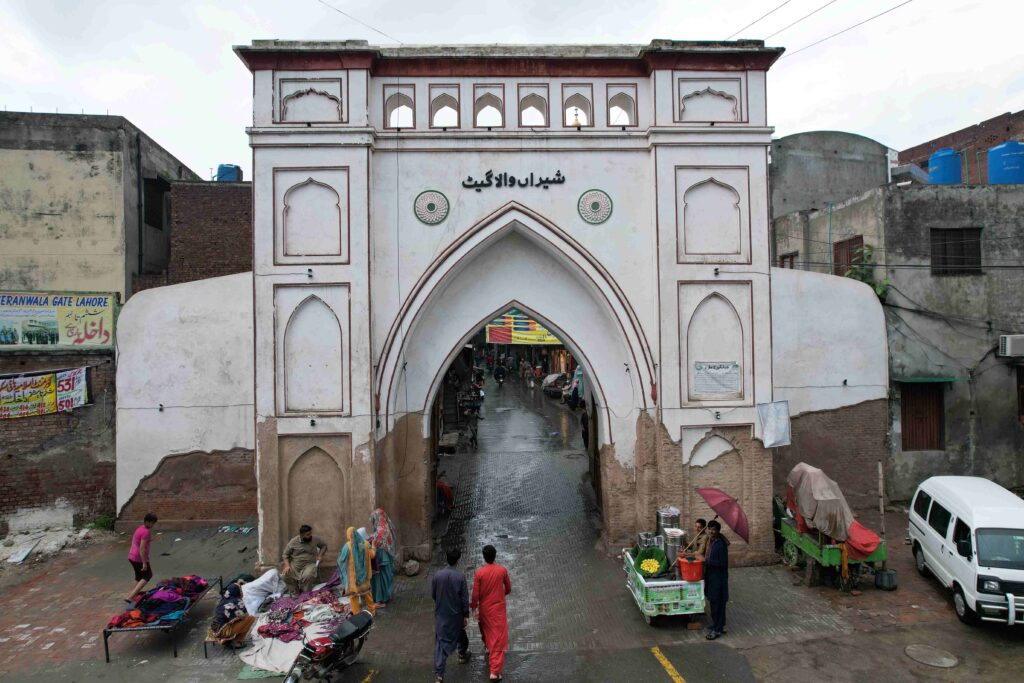
Kashmiri Gate
This Kashmiri gate is situated in the north of the Walled City Lahore. it is so named because of its opening towards valley Kashmir. Just like tribe “Bhat” in Bhati Gate, local natives of the gate belong to a tribe known as “Kashmiri”.
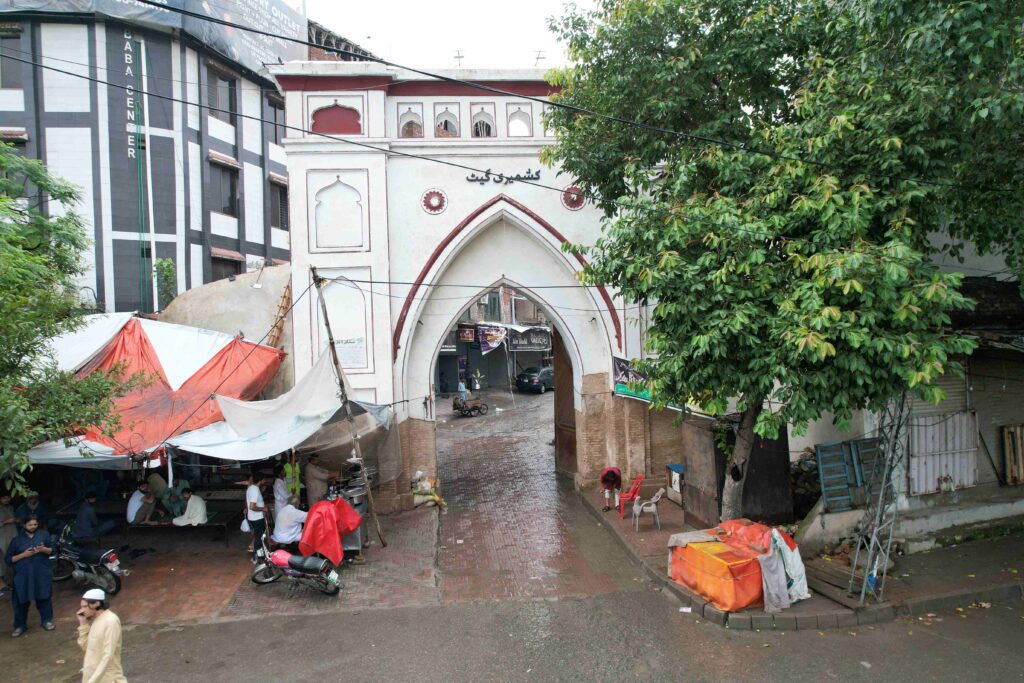
Masti Gate
Another gate Masti Gate was ‘Masjidi’ gate as the street further down led to one of the oldest Mosques in the city, the Mariam Zamani Mosque, named after the mother of Mughal Emperor Akbar. Over the years, the name Masjidi was changed to Masti. This gate is now the lost part of Walled City Lahore’s history. This gate is opposite the Akbari Gate of Lahore Fort.

Roshnai Gate
The only existing Mughal era gate is the Roshnai Gate (the gate of light) which was the gate to the main city of Lahore. It was lit by many lights and was named as Roshnai Gate. This gate is still in its original shape and structure. It exists near the main entrance of Samadhi of Ranjeet Singh and Badshahi Mosque. One of the walls of the Samadhi of Ranjeet Singh banks on this gate. At present the rooms of the gate are used as residence of the Archeology staff.
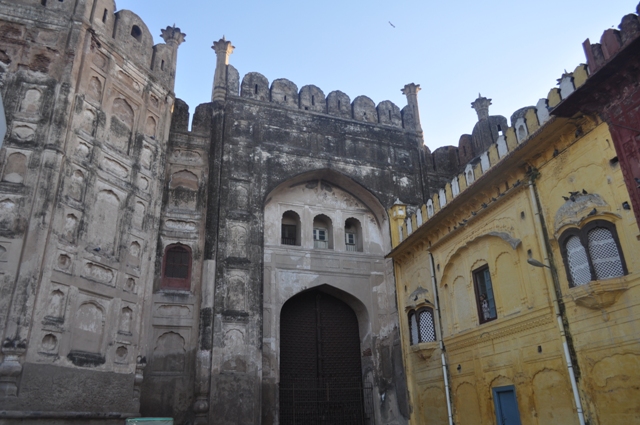
Taxali Gate
Taxali gate is one of those gateways that exist only in name. The gate was called Taxali because of a mint located there (taxal in the local language) in the Mughal era. There are no remains of the gate and the mint today, only one can guess the location of it. A famous bazaar of traditional shoes named Sheikhupurian bazaar exists in this gate. Also the most popular red light area of Lahore or the Heera Mandi is also located in this gate. many famous personalities have also been living in this gate like Noor Jehan ( singer), Sir Ganga Raam, Nadra Begum, Hamid Ali Khan’s family and many more. In the same area is the musical instrument market, the Langa Mandi. The first ever theatre of Pakistan Aziz Theatre is also located here along with the first cinema, Pakistan Talkies.
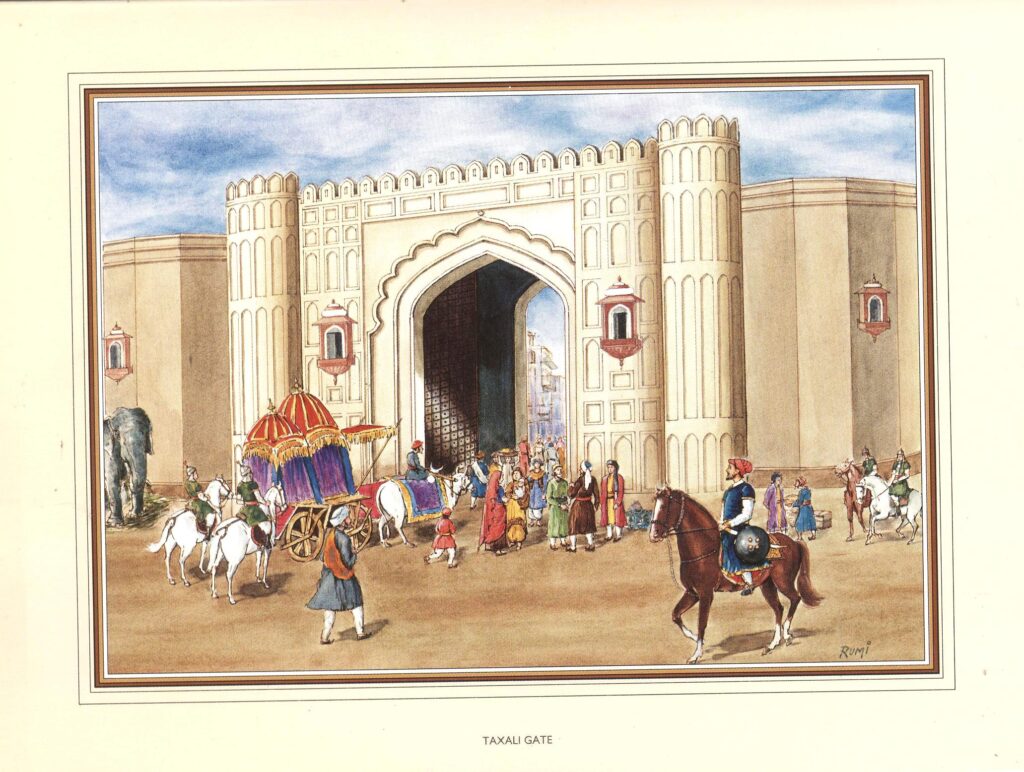
Bhatti Gate
From Taxali, crossing the Sheikhupurian Bazaar you can take your route to the popular Bhatti Gate which is on the southern side of the Walled City Lahore. The original gate was demolished and the present structure that we see today was rebuilt in British period. It was named after the Bhatis, an ancient Rajput tribe who lived in the area. Bhatti Gate is a house of legends. Many singers, cricketers, wrestlers, artists, poets, lawyers, teachers and writers have been living in this gate. The house of Allama Iqbal, Faqir Khana Museum, and Mubarik Haveli now converted into Naqsh School of Arts and house of Mollana Rohi can still be seen today inside this gate. There once used to be a Gurdawara inside Bhati Gate which with the passage of time lost its existence.

Lohari Gate
Lohari Gate is located adjacent to the Bhati gate. The gate was named after the city Lahore. Population growth inside the Walled City of Lahore started from this gate so the gate was named Lahori /Lohari Gate. Presently a lot of shops are seen surrounding the Lohari gate like other existing gates. Lohari gate is famous for food and the rich architecture. It is said by the historians that the red light area was originally in this gate near Chowk Matti but with the passage of time it shifted to Taxali. The remains of the huge havelis of dancers of those times are still there. The wonder of the Walled City, the Neevin Mosque is also located inside this gate. it is a mosque twenty five feet below the ground level.
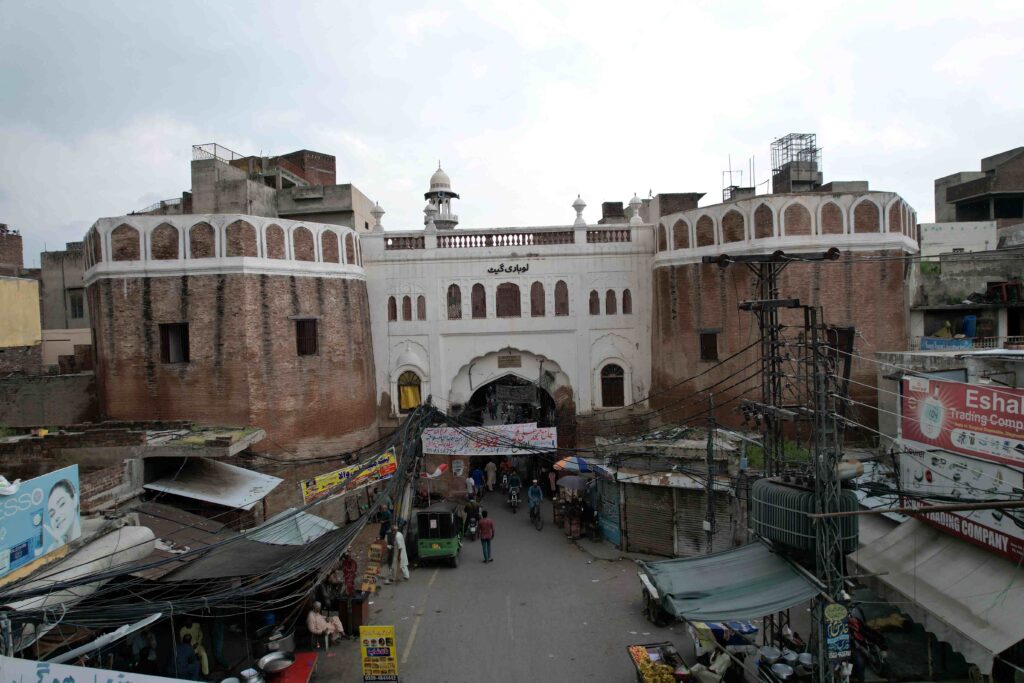
Mori Gate
Here comes the Mori gate which is located in between the Bhatti gate and Lohari gate. This gate is the smallest gate among rest of 13 gates. This gate was served to remove liter and waste from the Walled City Lahore. it was given a status of the gate in the British era.
Shah Almi Gate
The Shah ‘Almi Gate, largest market hub, was named after Mohammad Mo’azzam Shah ‘Alam Bahadur Shah (the son and successor of Aurangzeb). He was a mild and generous Emperor, who died in Lahore on the 28th February 1712. In this Gate most famous market exist of electronics, crockery, toys, cosmetics etc. Today this is the biggest commercial area inside the walled city and provides goods to the entire Lahore and Pakistan as well.
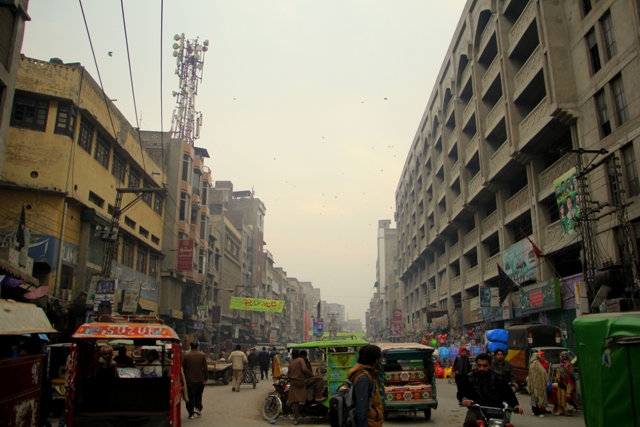
Mochi Gate
Another gate, Mochi gate is the entrance of Mochi Bagh. There are two stories regarding Mochi gate according to which it is said that, the gate was named Mochi Gate due to the cobbler shops situated in that area and the other story tells that the Gate was named as Mochi after a guard Moti whose name was later distorted by the people to Mochi. Mochi gate contains shops of dry fruits, fireworks and kites.
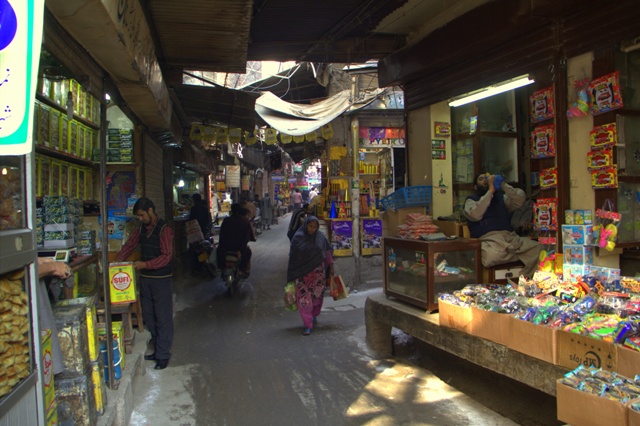
Akbari Gate
Akbari gate named after the Mughal Emperor Akbar who had rebuilt the town and citadel. This gate was destroyed during the British rule and was never rebuilt. At present, there is a huge grain market close to this gate, also named after the emperor, “the Akbari Mandi” or the Akbari Market.
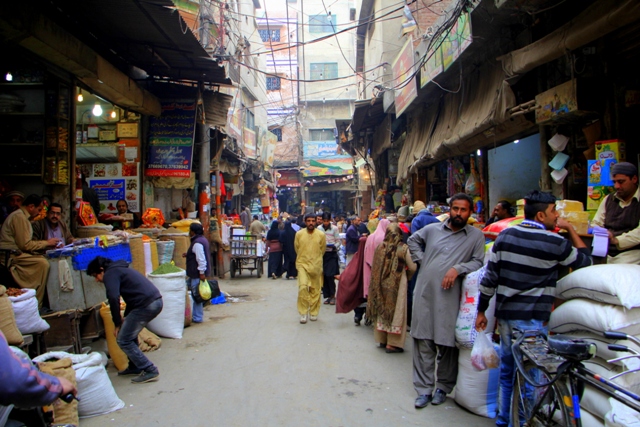
The gates and the fortified wall constructed by the Mughal Emperor Akbar were demolished during the British era. A circular garden and road was constructed instead of these, which still exist. The bricks of the demolished gates and walls were used in the construction of other building during the British era and Lahore Railway Station is one of them.
Only Roshnai Gate exists today in its original condition while most of the others like Delhi Gate, Sheran wala Gate, Kashmiri Gate , Bhati Gate, Lohari Gate and Mori Gate had been constructed again in British period and some others like Masti Gate, Texali Gate, Mochi Gate and Akbari gate have no traces today.
In my opinion these gates or the marks of these gates must be restored for the generations ahead. Even the existing gates are encroached upon by many shops and residential structures. If the city is restored to its lost glory, I guess it will be the biggest tourist spot in Asia. I wish we start taking steps for achieving this goal.
Writer : Tania Qureshi (Historian, Writer, Heritage Analyst)
The writer can be reached on twitter.com/TaniaQureshi

